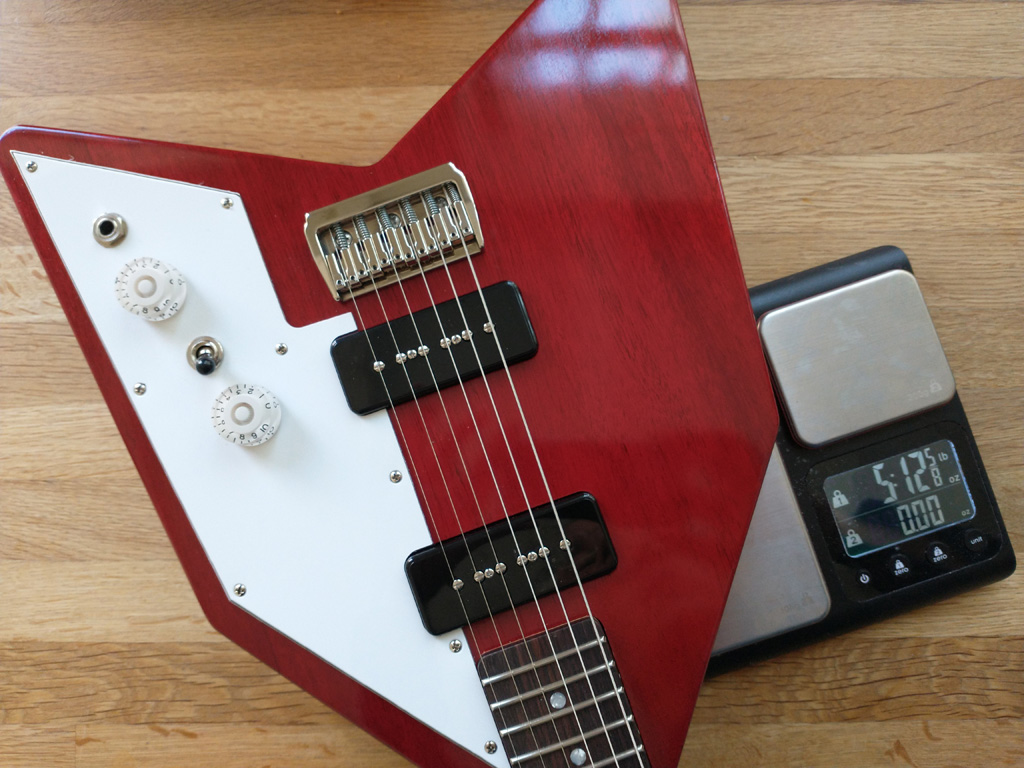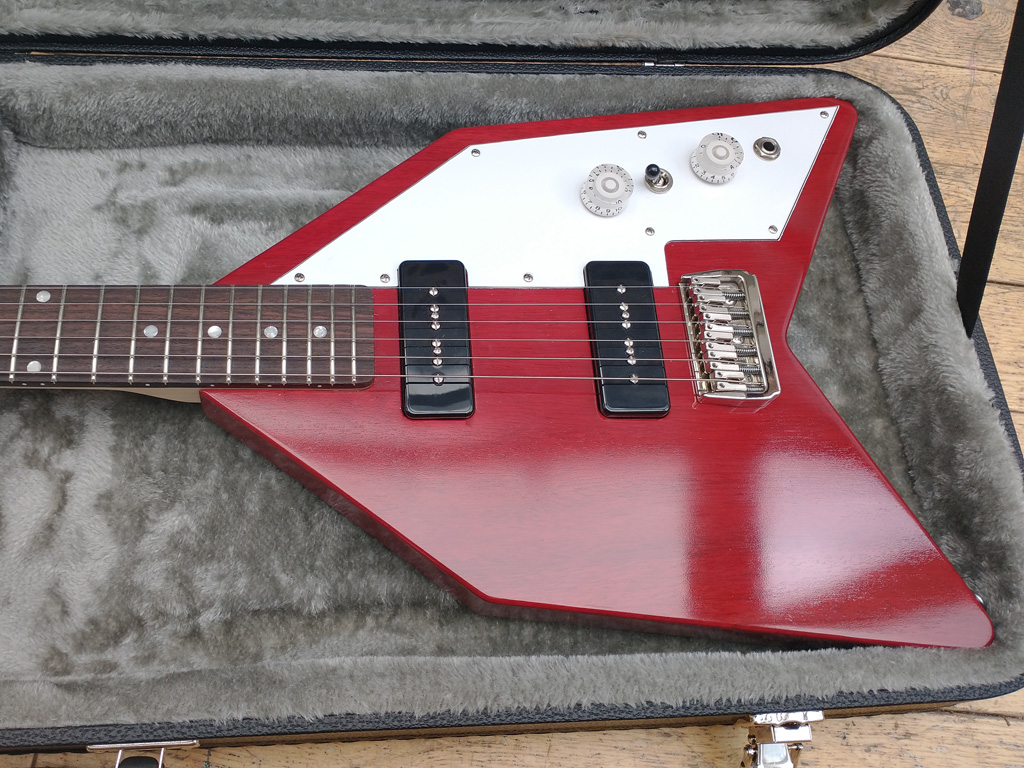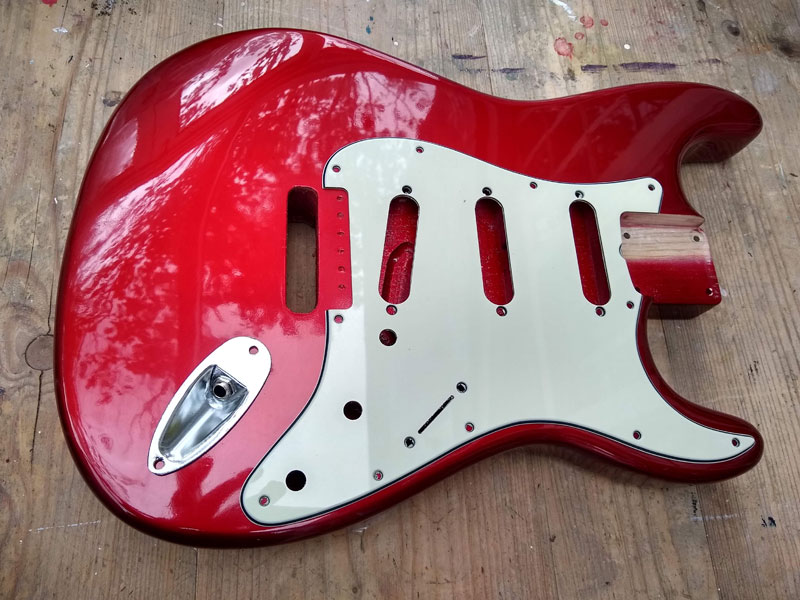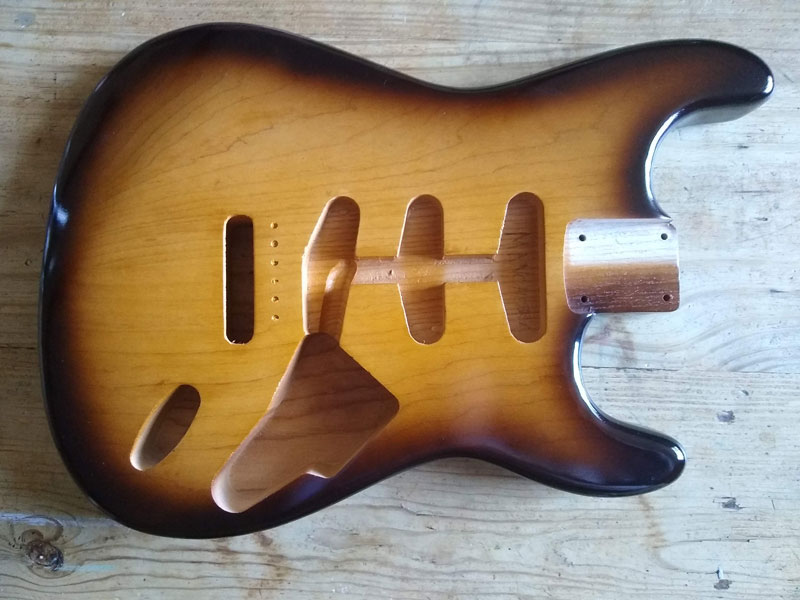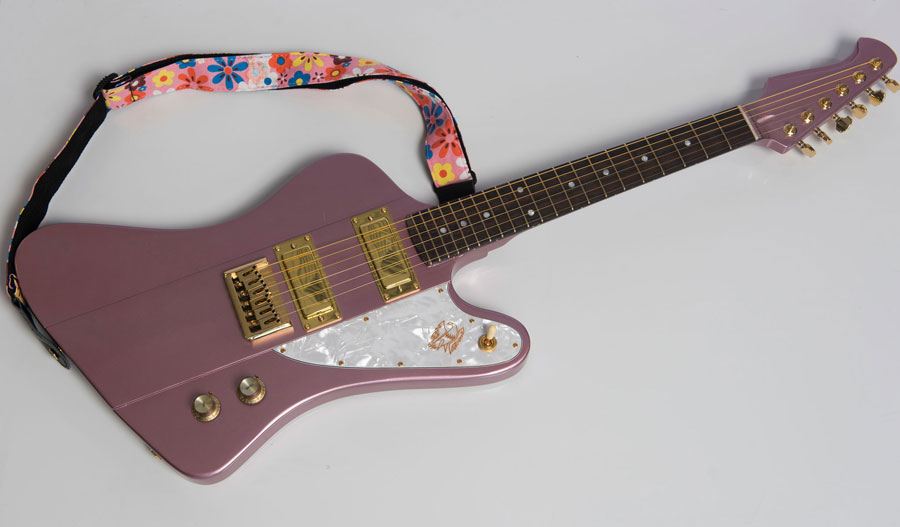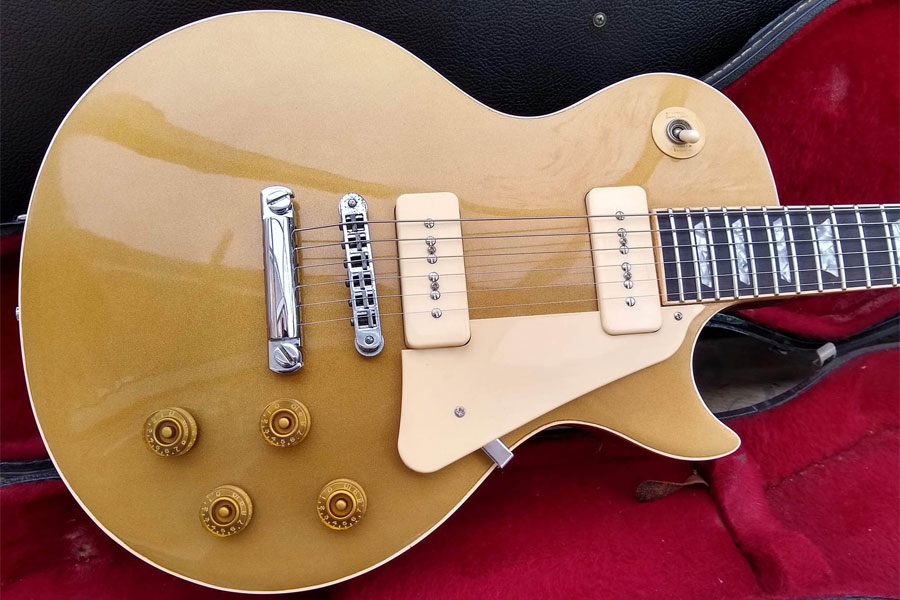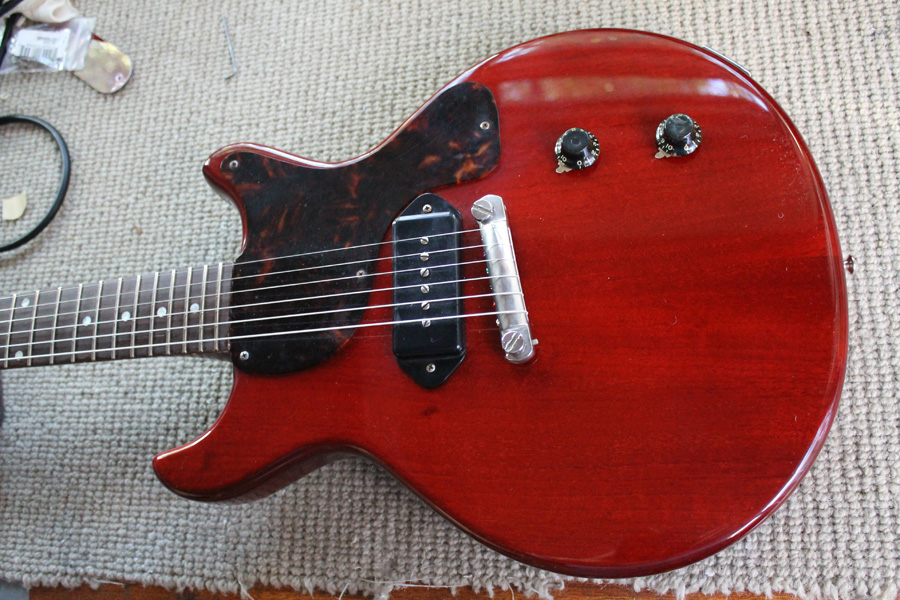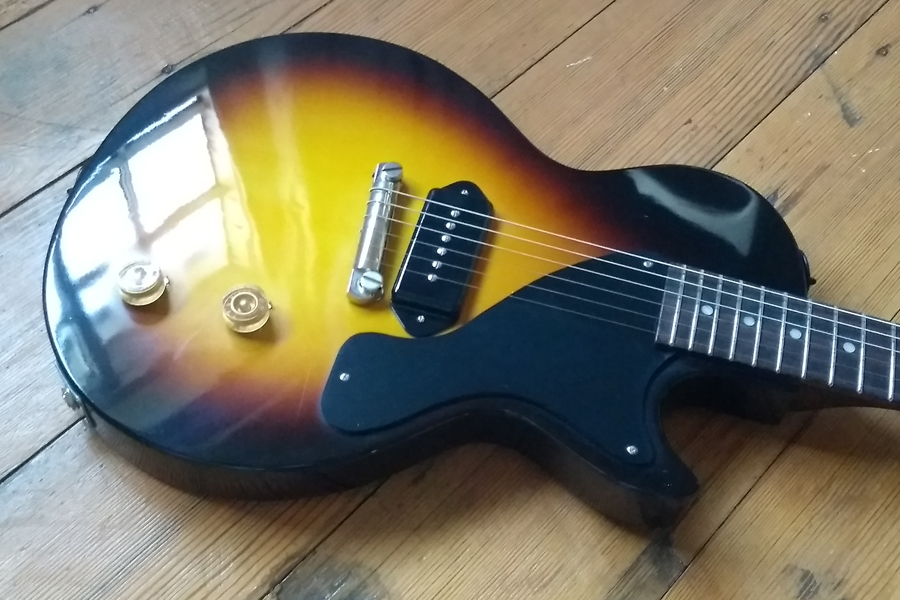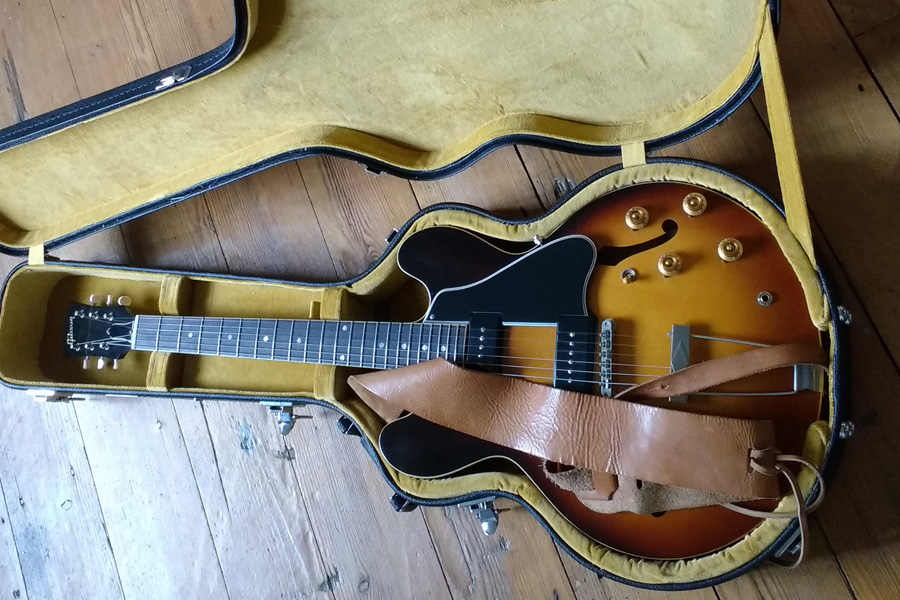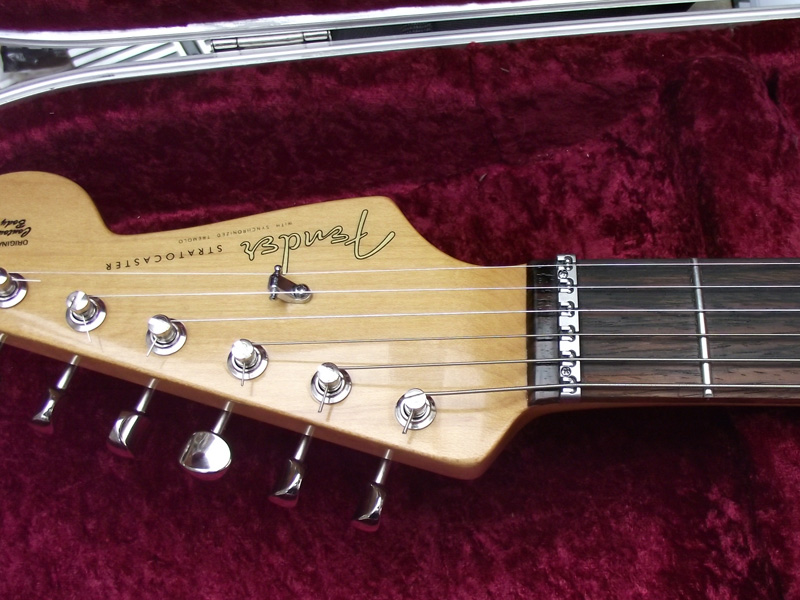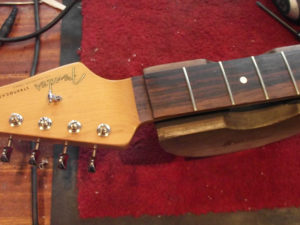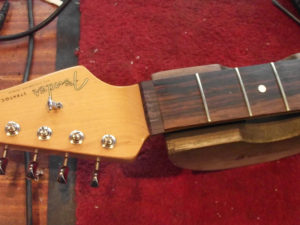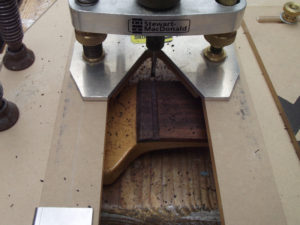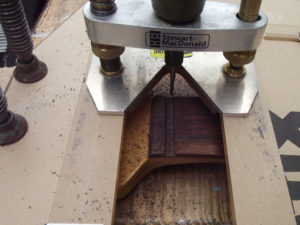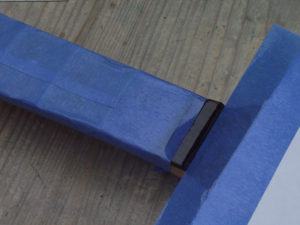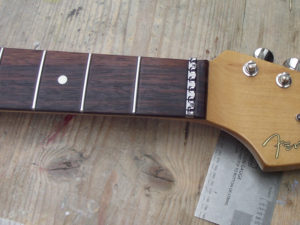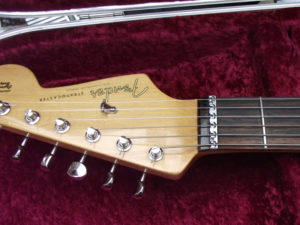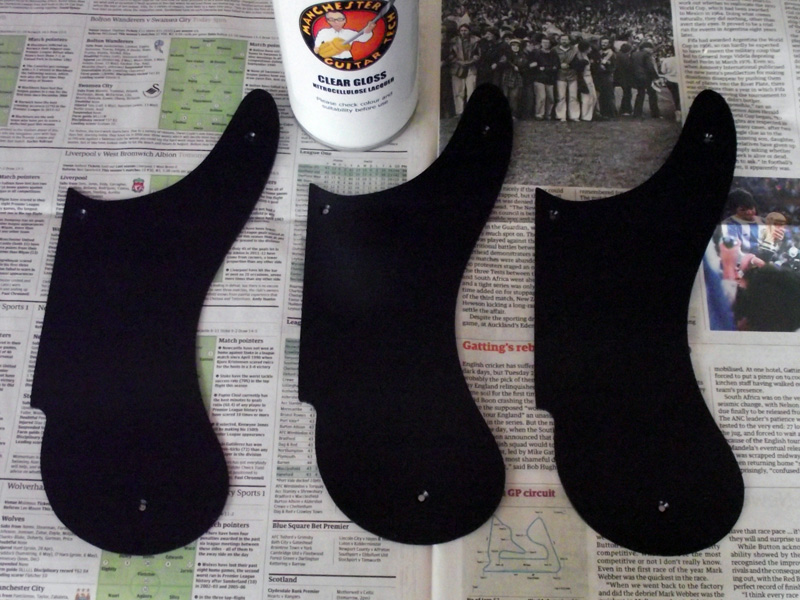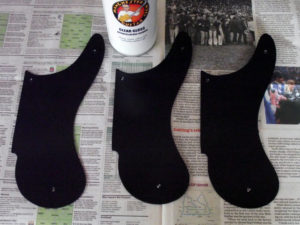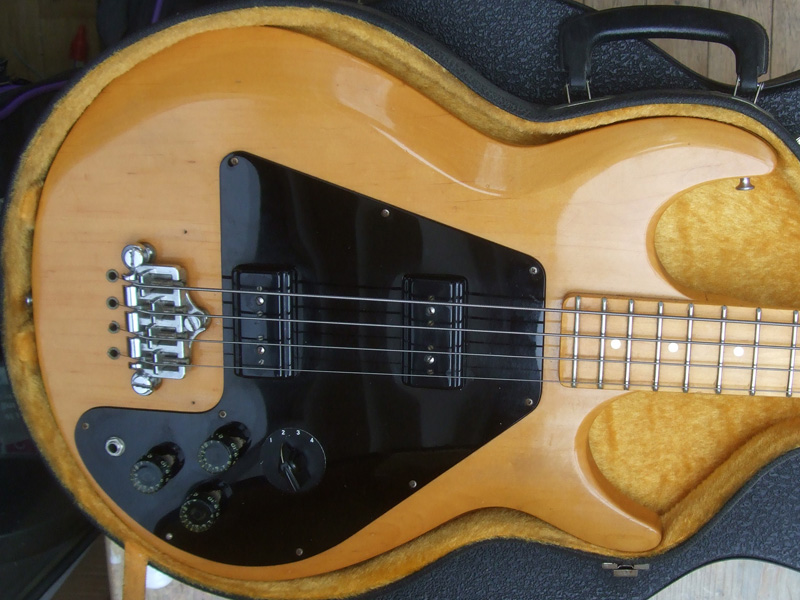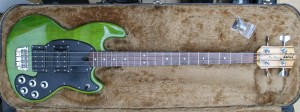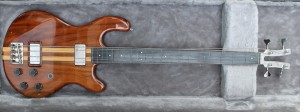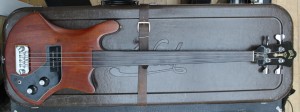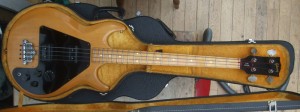
Ozzy Lister – guitar and bass repair
Here’s another LSR roller nut rescue, this time on a rosewood board Stratocaster, the previous LSR roller nut repair being on a maple ‘board.
This time the fitter had cut the slot too far back, and had removed the rosewood behind the existing nut, rather than just 3/32″ in front of it. They had also managed to snap the two tiny screws off in the neck. I’d normally have to extract them, but as the new nut was going in the correct position, some 3/32″ close to the first fret, I could leave them where they were.
Above shows where I have tidied the missing wood, ready to accept a rosewood fillet.
Here is the fillet being test-fitted for height and length. I have tried to match the grain pattern as best as I can.
Once I had glued the fillet in place and trimmed the edges, I cut the slot for the LSR roller nut using my Stewmac bridge slotting jig.
I first cut the slot 1/4″ wide to the correct depth before moving the jig slightly to cut to correct width with a second pass of the router.
I relacquered the end of the fretboard as it would have been originally.
Here is the nut in place. I think I did okay matching the grain.
And finally, here is the guitar reassembled and restrung.
I had a request to make one of these so made a few whilst I was at it!
These pickguards are made from “Bakelite” sheet and lacquered in clear gloss nitrocellulose .
They’re made to fit replicas of Leo Fender’s 1949 “Snake head” prototype that he used to take around to clubs for artist to try. It is from this guitar that the Telecaster was developed.
Over the last few weeks I’ve been fortunate to have some unusual 70s basses in the workshop. It was a coincidence that they were all here at the same time, although the two fretless basses were brought in by the same person.
Wal Pro II Bass
The Wal Pro series of basses was introduced in the late 70s and this is an early version as shown by the 9-laminate headstock.
This came to me to fix a problem with the electrics, which are very unusual, having a large printed circuit under whole of the pickguard to which all the components are soldered.
I cleaned the series/parallel switches and replaced two potentiometers. The original pots had imperial sized shafts so the metric replacements had to be padded out with brass sleeves.
Kramer 450B Bass
This mid-seventies bass was converted to fretless but the job was untidy. The synthetic fretboard was badly chipped where the frets had been removed and the infill (which looked like glazers’ putty) was crumbling away.
I recut the fret slots and inserted slivers of white plastic to act as markers. I glued these using Cyberbond Power Drop black superglue which I also used to fill the chips in the board.
One piece of trivia is that this bass was used on the recording of ABC’s seminal album The Lexicon of Love!
Guild B-301 Bass
This bass has been stripped and given a new pickguard at some time early in its life and had a nasty headstock break that had been repaired and re-broken.
I carefully cleaned the old glue from the break and re-set it. Unfortunately the repair will never be pretty but it ought to give years more service.
Gibson “The Ripper” Bass
These early Ripper basses have two humbucking pickups, designed by Bill Lawrence, and a four way pickup selector control giving series, parallel and out of phase combinations.
The bridge only setting and the two in-series settings were silent, which indicated that the bridge pickup was dead. These pickups are not easy to fix, as the insides are epoxied to the case, but using some ingenuity I was able to get the insides out and have the coils rewound.

